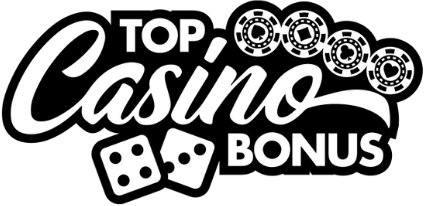The importance of position in Texas Hold’em (introduction)
In Texas Hold’em, position isn’t just a nice-to-have advantage, it’s the beating heart of advanced strategy. Forget aces and kings for a moment. Before you even look at your cards, where you’re sitting at the table already tells you how to play them. Yet, most beginners either overlook this or grossly underestimate its weight. In all the hands I’ve played over the years, the most common leak I’ve seen from aspiring players? Ignoring position. They chase luck from early seats and find themselves cornered when the firing starts. Winning poker isn’t about catching lightning in a bottle, it’s about setting traps, finding edge, and leveraging every subtle layer of information. And position, my friend, gives you just that.
Table of contents
Understanding position in the betting order
The poker table rotates like a carousel, but your seat determines your fate more than you think. In a standard 6- to 9-player Hold’em game, there are early, middle, and late positions. The dealer button rotates each hand and determines who posts small and big blinds. Players seated to the left of the big blind (UTG, under the gun) act first post-flop, which is the tightest and most dangerous place. The button and the cutoff, the two latest positions, act last during post-flop betting rounds, handing them powerful informational leverage.
Why early position is a minefield
From early position, you’re flying blind. Acting first means you’re guessing at the strength of everyone else’s hands. That’s like flipping pancakes without knowing if the griddle’s on. It forces a tight, disciplined range. Weak players often limp in here, hoping to see a cheap flop. But all they’re doing is painting a target on their backs. From UTG, I’ll tighten my opening range down to pocket pairs and high-value suited connectors. Anything else, and you’re dancing on ice.
The middle ground of middle position
Middle position offers a slight breather, but don’t relax too hard. You’ve got a few players behind you who could wake up with something deadly. Now’s the time for reading table dynamics. If it’s a tight table, you can steal some pots. If it’s loose, tighten up again. I’ve won countless small pots simply by exploiting hesitation from timid players acting after me. Position lets you pressure; lack of it makes you prey.
Dominating from late position
If position is power, late position is the throne room. When you’re on the button or one seat before it (the cutoff), you’ve gathered maximum intelligence. You can gauge the mood of the table, pick off weak bets, and dictate the pace. Half the pots I win, I do it with air from the button. Not bluffing recklessly, mind you, but capitalizing on weakness. This is where knowing bankroll management for casino poker games helps, because aggression from late position must still be budgeted and calculated, not wild.
How position affects hand selection
Far too many rookies treat each hand the same regardless of seat. That’s like trying to drive a Harley through snow, wrong tool for the job. Your hand range widens with position. In early seat, only premium hands are playable. In late position? You can open with speculative hands like suited gappers, small pairs, or even offsuit Broadway cards. But timing is everything.
My chart-adjusting rule of thumb
I trim my early position range down by about 60% compared to the button range. Say I’m willing to raise with 35% of hands on the button, in early position, I’m down to 10-15%, depending on stack sizes and table image. It’s surgical poker. Terrible players open too wide UTG and wonder why their KJ offsuit gets hammered. Position grants you permission to experiment, not an excuse to gamble.
Leveraging position post-flop
Now we stroll into deeper water. Post-flop is where position really earns its stripes. Acting last lets you control the pot size and test your opponent’s courage. No matter how many times I’ve played it out, I never get tired of exploiting a timid check from a player out of position. It’s as predictable as the morning sun.
Controlling the tempo
In position, you can choose to check behind for pot control, apply pressure with continuation bets, or float marginal hands through to the turn. Out of position? You’re playing defense. Players out of position often telegraph their hand strength, because they’re forced to act without feedback. And in this game, feedback is gold.
Stack sizes and opponents’ tendencies
Position’s value also compounds with certain table conditions. Short-stacked situations require even more precision. You’ve got less post-flop maneuvering room, so you want to be in late position to apply maximum pressure, especially on big blind defenders who are just looking to see a cheap flop. Long stacks? That’s where post-flop play deepens. Understanding stack-to-pot ratio becomes elemental.
Reading the room
You can’t just play charts, you’ve got to play faces. I once crushed a mid-stakes game by targeting one over-aggressive opponent who couldn’t resist bluffing from early position. I’d set traps from the cutoff and sweep up his bets like autumn leaves. Modern players with tunnel-vision HUDs often miss the forest for the stats.
Integrated play with modern platforms
Today’s online poker world means you’re often clicking instead of shuffling. If you’re playing at one of the best mobile online casinos, the table layout might look different, but the strategy holds firm. Position still determines how you interpret aggression and when you fire back. Just be sure your digital bankroll is locked in place and ready for swings by safely using familiar tools like Visa banking methods.
Why bonuses don’t replace position
Some players expect casino bonuses to patch up poor play. Trust me, they won’t. Free chips are fancy candy, but if you burn through them playing K-9 offsuit from UTG? You’re not taking advantage, you’re just burning daylight. Take the bonus, sure, but play like every chip is hard-earned. Discipline in position turns those freebies into weapons, not wasted ammo.
Final thoughts: the art of seated warfare
Texas Hold’em isn’t just cards, it’s seated warfare. Knowing where you’re sitting is half the battle. Heed your position like a general scanning a battlefield. Act last, and you’re playing with vision. Act first, and you’re hoping. Card strength fluctuates, luck comes and goes, but position? Position is a constant, everyday edge. Master it, and the game starts playing in slow motion. Ignore it, and you’re tossing good chips after bad. As always, respect the fundamentals, or the game will humble you fast.
And if you’re switching gears between game types like blackjack and poker, remember, blackjack’s about probabilities and rhythm. Poker? It’s about pressure and patience. Know the difference, and you’ll know when to fight and when to fold, wherever you play.





0 Comments